Sunday Nov 02, 2025
Sunday Nov 02, 2025
Thursday, 2 July 2020 00:20 - - {{hitsCtrl.values.hits}}
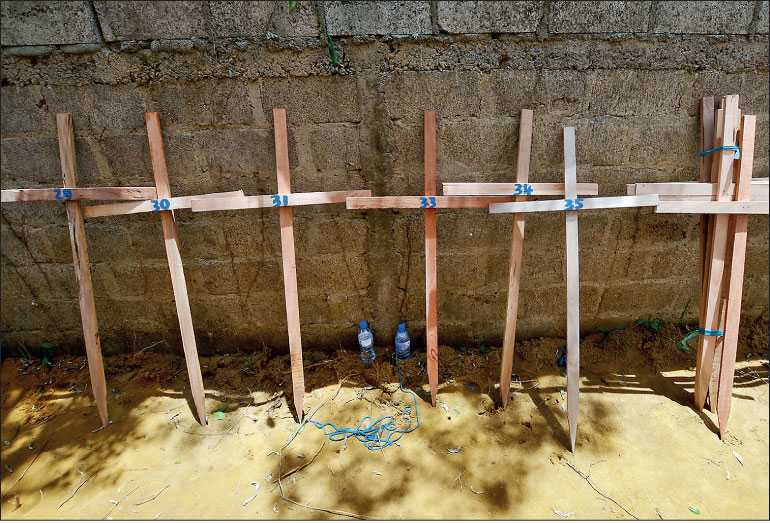
Those responsible for the criminal negligence that made the Easter Sunday carnage possible must be prosecuted. It is necessary to identify the institutional and procedural gaps and lapses, trace the reasons for them and guarantee non-recurrence
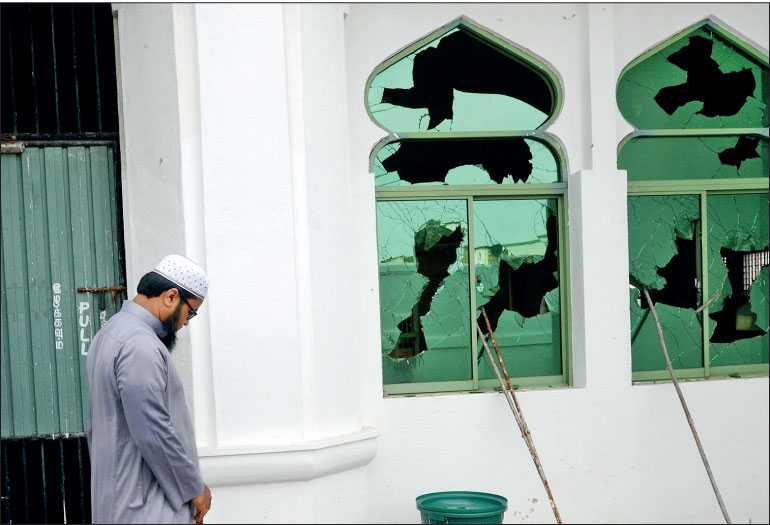
From the lapses in the treatment of a S. Thomas’ and UCL educated Colombo lawyer to the lack of consultation and communication with the Muslim community at the grassroots in Pottuvil, the moderate Muslim centre-space is being squeezed by the State
The regime’s promises and claims of “putting professional expertise first” is belied by the fact that having placed ex-military brass is in charge of everything from archaeology to agriculture, not to mention virtue—matters in which they have no particular expertise—President Gotabaya Rajapaksa delivered a parade-ground dressing down on prime time TV to the Central Bank economists. 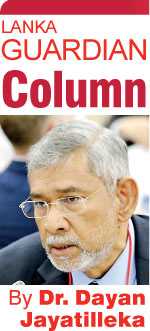
By contrast, one didn’t see on TV news the President upbraiding whoever was responsible for sending the Navy unprotected into anti-corona roundups and on home leave without testing.
The President didn’t seem to know or care that the Central Bank Chief Prof. W.D. Lakshman has been the economics teacher of generations of university students (his Sinhala-language textbook is the standard work), the Vice-Chancellor of the University of Colombo, an authority in his field whose service to the larger field of education and by extension the nation, deserves respect. Any president sets a public example, and should set one of respecting an authentic “guru” (not a fake “viyatha”). That’s a sign of virtue.
As Dr. P.B. Jayasundera would confirm, not even the perfectionist President Premadasa launched a public tirade against experts and top professionals in his employ. Today, an “angry autocrat” style is in.
Easter massacre mysteries
I’ve yet to see a clear answer to the question as to who received the repeated warnings from the Indians about a likely terrorist attack—and warnings there definitely were because the Deputy National Security Advisor to Prime Minister Modi said it at a high-level conference in Russia inaugurated by the Head of Russia’s National Security Council, at a roundtable on terrorism chaired by the Deputy Head of the Russian Security Council, at which I was also an invited speaker.
Who did those who received the warnings report to and when? Where, when and with whom precisely did the transmission of that information stop and why? The answer to the questions must be clearly illustratable on a chart. So far it isn’t.
That person or those persons are responsible for the criminal negligence that made the carnage possible, and must be prosecuted. It is necessary to identify the institutional and procedural gaps and lapses, trace the reasons for them and guarantee non-recurrence.
If a security guy told the hospitalised father of a young politician about possible danger to a Catholic church on Easter Sunday, who was that security guy and how did he come to know about it?
What happened to the story that was in the public domain at the time, of a written instruction purportedly from a capital city to its Embassy in Colombo to caution its staffers and contacts not to be in certain types of places during the Easter season? The state in this news story was the prime purveyor of Wahhabi ideology.
What was most interesting was phase two of the news story. The story was telecast, with a visual of the alleged instruction, on Al Manar TV in Beirut, Lebanon. The station is well-known as affiliated to the Hezbollah, the powerful Lebanese Shia resistance movement, which was the first to enter Syria and fight the ISIS. Even the Israelis, the deadly foe of the Hezbollah, take that politico-military movement exceedingly seriously as formidable and highly professionalised. So, a story put out by the pro-Hezbollah TV station in Beirut is not to be dismissed lightly.
The story of a letter with instructions was denied by the relevant embassy in Colombo. But as far as I can tell, there was no denial, let alone a robust one, by the officials of the relevant state in its own capital or representatives in Lebanon, where the story was publicly aired.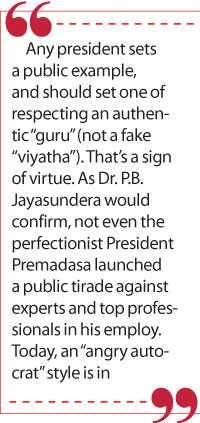
Has Sri Lanka followed up on this, starting with the Beirut end and a visit by our DPLs to the station that ran the story? If not, why not? If the story is true, how did the country concerned get the information and did they share it with the Sri Lankans; if they did, who was it with and if they didn’t, why was that?
Why did the Islamist-jihadi terrorists who began their violence by destroying Buddha statues, and listed in their pre-Easter video, alleged desecration of the Koran and Islamic social spaces by Sinhala extremists suddenly switch to Catholic and Christian churches, and massacre worshippers when they had no history of friction with Sri Lanka’s Christian community? Is the solitary mention of ‘Christchurch’ in a video, a credible answer?
Who made the bombs, and who trained them in doing so, when and where?
What’s the precise connection with ISIS?
Hiding Hejaaz Hizbullah
Is Hejaaz Hizbullah, as is alleged by the State, someone who gave children weapons-training in their classrooms? Or is he, as is also alleged by the State, “the Anton Balasingham,” the theoretician of National Thowheed Jamaat?
As Karuna would confirm, he cannot be both, because Balasingham was never known to have wielded a gun let alone trained anyone on firearms. And if the State has irrefutable evidence of this, why show kids photos of the young lawyer in Court, before the identification parade, as alleged by Colombo Magistrate Ranga Dissanayake? Indeed, why delay adhering to the provisions of the draconian Prevention of Terrorism Act itself? Why not just produce the guy in Court?
When the State is not seen to be transparent and fair in the matter of a well-educated young lawyer of the Supreme Court – in terms of access to lawyers, the language he can speak to them in, etc. – the optics and messaging are all wrong: which Muslim can expect fair-play?
The Sinhala-Buddhist establishment has lost the vital ability to differentiate between the educated Muslim elite and assimilated upper middle classes, and the swamp of backward Wahhabi-Salafist extremism in which Islamist-jihadist terrorism arises and thrives.
As with the Tamils, the establishment is alienating precisely those moderate politicians, sophisticated social strata and educated young Muslims who can lobby the international community, especially the 57-member state OIC (53 states are Muslim-majority).
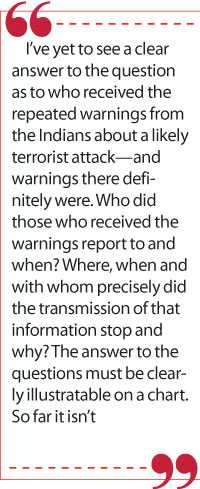 Aluthgama to Pottuvil
Aluthgama to Pottuvil
There is no evidence that any Lankan Muslim turned to armed violence and weapons training against Sinhalese, BEFORE the anti-Muslim agitation by the BBS starting 2012, and most especially the lethal Aluthgama violence of 2014.
Muslims had guns since the anti-LTTE war when National Security Minister Lalith Athulathmudali permitted the creation of the Islamic Jihad as an anti-Tiger force. The machine gun and grenade attack on the Kattankudy mosque in 1990 required a further arming of the Muslim Home Guard units.
The extremist ideology of Wahhabism was of course being spread over the past decade at least but the violence was Muslim-on-Muslim, as in the attack on the Sufis. But the turn to terrorism was after, not before, the rise of the BBS and other such extremist Islamophobic organisations.
The BBS and other similar extremist organisations contributed in two ways: firstly, by making the entire Muslim community feel threatened as Muslims, and secondly, by attacking Muslim business houses and thereby weakening the business community which in any society is a buffer against radicalisation and extremism.
The manner in which the lockdown of Muslim majority areas and (televised) round-ups of suspected patients was implemented, appeared discriminatory.
Meanwhile, the newly-appointed Presidential Task Force on Eastern Archaeological Heritage has certainly taken the citizenry to task, as seen from recent footage from Pottuvil. Men and women, with children, speaking emotionally in Sinhala, Tamil and English, while surrounded by Police and armed Navy personnel, pleading and protesting that they and their families had lived in this area for decades, but had abruptly been informed that the Archaeological Department required them to vacate so as to ascertain whether there were valuable artifacts in that area. They urged that the matter be routed through the proper authority that they were accustomed to, namely the Pottuvil local government bodies. Those in uniform seemed unresponsive.
This smacked of dispossession, and is no way to prevent radicalisation. The lack of consultative communication, arbitrariness and unilateralism are textbook conditions for growth of alienation and extremism.
From the lapses in the treatment of a S. Thomas’ and UCL educated Colombo lawyer to the lack of consultation and communication with the Muslim community at the grassroots in Pottuvil, the moderate Muslim centre-space is being squeezed by the State. If the parliamentary moderates, the SLMC and TNA do not cooperate in the east, the sociopolitical vacuum that arises may be filled by a mood of despair, outrage and eventual militancy that the country surely does not need.
Militarist vector
What has happened in – and to – Sri Lanka is not that “Western”/“Westernised” liberal-democratic discourse and norms have been dispensed with by the Sinhala Buddhist militarist-Right and a doctrine of leadership by a “strongman” has been adopted. That is a typical liberal oversimplification and understatement.
Nor is the problem that a former military officer was elected President. Listed by TIME as one of the world’s 100 most influential personalities in 2009, Indonesian leader and former Army General, President Susilo Bangbang Yudhoyono (whom I was privileged to converse with in Paris) had a well-known quote on the role of the military: “…there is no so-called ‘dual function’ of the military, there is no so-called social political mission in the military.”
The ex-military element dominant in Sri Lanka today did not belong to the ‘school’ of military thought and practice, military culture, norms and values – the military ethos – identified with the late Gen. Kobbekaduwa, trained at Sandhurst and the Royal College of Defence Studies (RCDS), but precisely with the ‘school’/‘camp’ identified with his hawkish competitors, critics and rivals within the military.
Had Gen. Denzil Kobbekaduwa survived his wounds, run for presidential office and won, how much of what is happening today, including the blatant militarisation of civil administration and the appointment of militarised Task Forces excluding the Prime Minister and Cabinet, would have taken place?
Given the manner in which Gen. Kobbekaduwa won over Manikkadasan, the military leader of PLOTE in Vavuniya, who had been shot in the gut after a battle with his troops, and the praise he received from Jaffna residents when he publicly got his soldiers to return looted gold, it is difficult to believe that he would have engaged in the insensitively mono-ethnic, mono-religious unilateralism in the Eastern Province that we witness with the Heritage Task Force.
This is of course, counter-factual history. More to the point is why the Kobbekaduwa tradition or more accurately the Kobbekaduwa-Gerry de Silva (the latter topped the foreign students batch at Sandhurst during his time) ethos ended. That responsibility accrues to the doyenne of Lankan neoliberal politicians, President Kumaratunga, who did not nominate Kobbekaduwa protégé, Gen. Gamini Hettiaarachchi, iconic ‘father’ of our Special Forces, to the National Defence College (Delhi) course which was a sine qua non to become Army Commander. This was despite the fact that the successful LRRP operations on her watch were due to the mentorship of Gen. Gamini Hettiarachchi. Instead she sent a personal favourite who headed her security detachment, whose name I never heard of before or since.
All scholarly military writing internationally identifies as a crucial factor in our victory in the final war, Gen. Sarath Fonseka’s brilliant innovation of imparting Special Forces training to the infantry and infiltrating large numbers as four-man teams into the jungles, behind LTTE lines. It was Mahinda’s, Fonseka’s and Gota’s War. That indispensable ingredient, the Special Forces training, was the legacy of Gen. Hettiarachchi, Gen. Kobbekaduwa’s protégé.
However, when it came to the final war, reaping the harvest of victory and shaping the postwar order, the Kobbekaduwa tradition/line had been cut short and inevitably replaced by the ultranationalist alternative ‘school’/‘tendency’ in the military. Rightly so, since the available option, and CBK-Ranil legacy, was an uninspiring pro-CFA Army Commander.
When the war broke out, they had already been understandably embittered and radicalised by the ‘Package’-Sudu Nelum-CFA-ISGA-PTOMS chain of appeasement of the dismal decade 1995-2005. Yahapalanaya’s bond scam, Geneva 2015 resolution, centrifugal constitutional draft and Easter terrorism were the ‘Versailles/Weimar’ equivalents that cemented their convictions.
They are the new, Praetorian power-elite.
“Absolute evil”
For decades the anti-UNP centre-left supported the struggles of the Black people of the USA and identified with the US Democrats. A fortnight back, the author of the seminal ‘Gota’s War’ made an exultant prediction in a mainstream Sunday paper of a sweeping Trump “law and order” victory this November, topping it with a virulent denunciation of the protest demonstrations. (Last Sunday, Vijaya Chandrasoma surgically shredded that Far-Right tract.)
More fundamentally, the power-elite has converted to an ideology which is way outside the parameters of universal civilisational norms and reason that even many denounced by Western liberals as “illiberal democrats” and “strongmen” adhere to.
The 2018 controversy over the (televised) Hitler evocation, Gotabaya Rajapaksa’s defence of its advocate and criticism of those who criticised the reference, and the elevation of the advocate to an Advisory Council to the President which convenes monthly, taken together with contemporary appearances of Hitler in the semiotics and discourse of his inner circle, are but symptomatic.
An examination of the discourse shows that Sinhala Buddhist militarist-Right argues that Hitler’s mistake was invading other countries, and that the Hitler they admire was the pre-war one “who made Germany strong”. To them, Hitler’s “passionate love of nation” makes him more positive than negative a figure, or exculpates him to some degree. They do not seem to know that it was not a “strong” but a firebombed, ravaged and divided Germany that Hitlerism resulted in, and that this destruction was the consequence of Hitler’s fascist ideology and program itself.
Universal civilisational values and reason hold that the root of Hitlerism was its fascist ideology, which was and is evil. In his speech at the magnificent, moving 75th anniversary celebration of the Red Army’s victory over Nazism (held on 24 June), President Putin defined it as “the most important victory in human history…they defeated the lethal ideology of Nazi fascism…it was a victory of good over evil”. With radical unambiguity, Putin definitively categorised Hitler’s Nazi fascism as “absolute evil”.
It is ironic that a leadership which appoints a Task Force on “Virtue”, cannot tell the difference between good and evil – virtue’s very touchstone – in so fundamental a matter of humanity’s history.
What, in addition to unchecked executive power, will result if the upcoming election produces a two-thirds majority 35 days from now? One only has to imagine the fate of the USA if the American Constitution could have been changed by Trump’s Alt-Right white supremacist base which includes KKK and neo-Nazi militia, or what the fate of India would be if its secular Constitution were to be changed according to RSS-Shiv Sena ideology.
Meanwhile the new issue of Foreign Policy magazine decries “Kenya’s Road to Dictatorship”, detailing how President Uhuru Kenyatta has undermined the Constitution and transferred hitherto devolved municipal authority in the crucial Nairobi district to the President’s Office and replaced elected officials with seven military officers to run it.
COVID-19 isn’t the only contemporary contagion.
Pix by Shehan Gunasekara